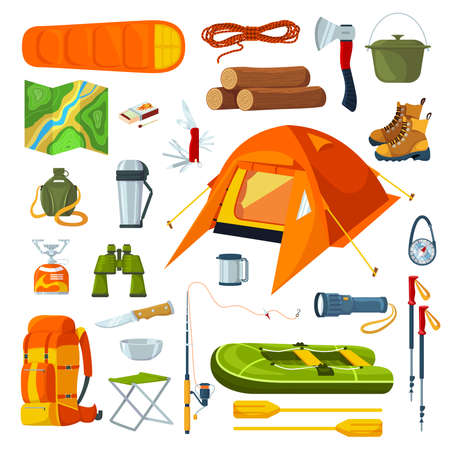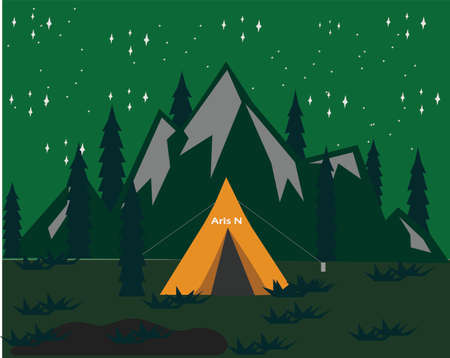Understanding Wild Camping Laws in Scotland
Wild camping on the Isle of Skye offers an enchanting escape into Scotland’s raw and rugged beauty, but it’s essential to understand the legal landscape before you pitch your tent. Scotland stands apart from much of the UK thanks to its progressive approach to access rights, enshrined in the Land Reform (Scotland) Act 2003. This landmark legislation grants everyone the right to responsible access over most land and inland water, including for wild camping. However, these rights come with responsibilities and certain local variations—especially relevant when exploring popular destinations like Skye.
The Land Reform Act allows for wild camping on unenclosed land, provided that campers behave responsibly and respect both nature and those who live and work on the land. It’s worth noting that “wild camping” under Scottish law refers to lightweight, leave-no-trace camping by small groups, rather than large-scale or car-based setups. On the Isle of Skye, some areas are governed by specific bylaws due to increased visitor numbers and environmental pressures—particularly during peak season or in sensitive spots such as around Loch Coruisk or near main tourist sites. Certain places may temporarily restrict camping or request that campers use designated sites instead.
Before heading out, it’s wise to check for any current bylaws or seasonal restrictions affecting your chosen area on Skye. Local ranger services and community websites often provide up-to-date guidance. By staying informed and respecting these rules, you’ll not only ensure a smoother trip but also help preserve Skye’s wild charm for everyone who comes after.
Respect for Nature and the Scottish Outdoor Access Code
To truly immerse yourself in the wild beauty of Skye, it is essential to embrace both freedom and responsibility. The Scottish Outdoor Access Code lies at the heart of wild camping culture here, shaping not only your experience but also your relationship with this ancient landscape. Unlike other parts of the UK, Scotland grants everyone the right to roam—provided you do so with care, respect, and consideration. This ethos is more than a legal framework; it’s a pact between visitors and nature itself.
Key Elements of Responsible Behaviour
When wild camping on Skye, your actions should be guided by the principles outlined below:
| Principle | What It Means |
|---|---|
| Respect for People | Avoid disturbing local residents and fellow travellers. Keep noise to a minimum and camp discreetly away from homes, roads, and cultivated land. |
| Care for the Environment | Never leave litter or damage flora. Stick to established paths where possible and avoid lighting open fires that could scar the ground or risk wildfires. |
| Leave No Trace | Pack out everything you bring in—including all rubbish. Even biodegradable waste should be carried away if bins aren’t nearby. |
| Sensitive Sanitation | If you need to answer nature’s call, do so at least 30 metres from water sources and bury waste responsibly, using a trowel if necessary. |
The Spirit of Leave No Trace
The Isle of Skye’s rugged charm depends upon our collective stewardship. Leaving no trace isn’t simply about tidying up—it’s about preserving the wildness for generations yet to come. Every footstep should be light; every campsite invisible upon departure. Whether you’re pitching beneath brooding Cuillin peaks or beside mirror-still lochs, let your presence blend seamlessly into the landscape.
Cultural Considerations Unique to Skye
Remember that much of Skye is working land—crofting fields, grazing pastures, and community spaces. Always secure gates behind you, steer clear of livestock, and show courtesy to farmers going about their daily lives. If in doubt about whether an area is appropriate for camping, seek permission or choose a spot further afield. In embracing both freedom and respect, you become part of the living story of Skye—a place where wildness and welcome go hand in hand.

3. Choosing the Perfect Wild Camping Spot on Skye
There’s a quiet magic to waking up amidst the wild beauty of the Isle of Skye, but finding the right spot for your tent is key to truly embracing this enchanting landscape. As you wander through Skye’s mist-laden glens and windswept moors, seek out places that are both scenic and discreet—hidden gems that offer privacy without intruding upon the daily rhythms of local life.
Seek Out Seclusion and Respect Privacy
When selecting your wild camping pitch, prioritise areas away from houses, farms, and popular walking routes. The aim is to blend into the landscape, treading lightly so as not to disturb locals or fellow travellers. Tucked behind a rocky outcrop or nestled beside a quiet loch, you’ll find both shelter from the elements and a sense of solitude. Avoid pitching in busy laybys or near main roads; instead, let curiosity lead you down winding tracks where the only sound is the soft call of curlews at dusk.
Consider the Ever-Changing Weather
The weather on Skye is famously capricious, with rain clouds rolling in from the sea and winds whipping across open ground. Choose higher ground with natural drainage to avoid waking up in a puddle after one of Skye’s sudden downpours. Shelter is precious here: look for spots protected by boulders, small hills, or ancient trees, but take care not to camp too close to watercourses which may swell overnight after heavy rain.
Cherish Good Relationships with Landowners
While Scotland’s access rights are generous, courtesy remains essential. If you’re near crofting land or working farms, always ask permission before pitching your tent—even if it feels remote. A friendly word goes a long way, and many locals will be happy to share advice about safe and beautiful spots. Remember, your respect for their land reflects well on all future campers who follow in your footsteps.
Top Tip: Leave No Trace
Whether you’re gazing out over the Quiraing or listening to waves at Loch Coruisk, leave your chosen place as pristine as you found it—no trace of your stay except perhaps footprints fading in the heather. This gentle stewardship ensures that Skye’s wild corners remain unspoilt for generations of dreamers yet to come.
4. Essential Gear for Skye’s Wild Outdoors
The Isle of Skye’s wild beauty is matched only by its capricious weather and rugged landscapes, demanding careful thought when packing your camping kit. Whether you’re pitching beside a loch at dusk or tucking yourself into a remote glen beneath the stars, being well-prepared makes all the difference between a magical experience and a miserable one. Here’s a curated list of essentials to help you embrace the elements with confidence, comfort, and respect for both nature and yourself.
Must-Have Camping Kit
| Item | Why You Need It |
|---|---|
| Four-season tent | Robust enough to withstand sudden gales and Highland rain—Skye’s weather can turn in an instant |
| Midge net & repellent | The infamous Highland midges are relentless from late spring to early autumn—don’t underestimate them! |
| Waterproof rucksack cover | Protects your gear during squalls and drizzles common on the island |
| Lightweight sleeping bag (rated for low temperatures) | Nights can be chilly, even in summer; warmth is essential after a day’s trek |
| Portable stove & fuel | Open fires are discouraged; a compact stove lets you brew tea or cook up supper without harming the land |
| Reusable water bottle & filter/purification tablets | Streams abound but safe drinking water isn’t always guaranteed |
| Map & compass (or GPS device) | Mobile signals are patchy—traditional navigation skills are invaluable here |
| Headtorch with spare batteries | Nights fall quickly in the Highlands; hands-free lighting is essential for safety and comfort |
| Trowel & biodegradable toilet paper | If nature calls, leave no trace behind—respect the land and fellow explorers alike |
| First aid kit & blister plasters | The terrain is rough underfoot; minor injuries can happen even on short walks |
Packing for Skye’s Weather: Clothing Tips
- Layered clothing: Opt for moisture-wicking base layers, insulating mid-layers (like fleece), and a sturdy waterproof outer shell. Layers let you adapt to everything from sudden sunshine to horizontal rain.
- Waterproof trousers: Not just a luxury—often a necessity on boggy paths or during persistent drizzle.
- Woolly hat & gloves: Even in midsummer, winds off the Atlantic can chill exposed skin.
- Sturdy walking boots: Preferably waterproof with good ankle support—Skye’s trails are often rocky and uneven.
- Campsite shoes: A dry pair of slip-ons or sandals gives tired feet respite after a long hike.
A Note on Sustainability and Respectful Camping
Sustainable choices—like reusable water bottles, eco-friendly soap, and durable kit—help preserve Skye’s unspoilt character. Always adhere to Leave No Trace principles: pack out all rubbish, camp discreetly away from roads and homes, and leave each wild spot as beautiful as you found it. By packing thoughtfully, you’ll not only safeguard yourself against Skye’s whims but also honour this ancient landscape for fellow adventurers yet to come.
5. Safety Tips and Local Etiquette
The Isle of Skye is a place where the weather can shift from serene to stormy in the blink of an eye, so keeping safe while wild camping is paramount. Always check the forecast before you venture out—pack waterproofs, sturdy boots, and plenty of layers to be ready for whatever the Scottish skies send your way. Even in summer, mist and rain can roll across the glens, making paths slippery and visibility low. It’s wise to carry a reliable map, a torch with spare batteries, and let someone know your planned route and expected return.
Respecting Local Communities
Skye’s villages and crofting communities are woven into the landscape. While wild camping is permitted under Scotland’s Outdoor Access Code, always pitch your tent well away from homes, farms, and livestock. Avoid blocking gateways or tracks; these are often lifelines for local residents. If you’re not sure whether you’re on private land, seek permission—a friendly word goes a long way here. Remember to shop locally when possible; supporting island businesses sustains this unique way of life.
Interacting with Fellow Campers and Crofters
The wild places of Skye attract like-minded souls seeking solitude and wonder. Greet fellow campers with a nod or smile, but respect their space—many come here precisely for peace. If you meet crofters tending sheep or land, be courteous: keep dogs on leads and gates as you find them. Conversations are often warm but unhurried; take time to listen if a local shares advice or stories about the area.
Leave No Trace
Perhaps most important of all: leave Skye as wild as you found it. Take every bit of litter home—including food scraps—and avoid campfires unless you’re certain it’s safe and permitted. Use a camping stove for cooking, and never cut live wood. By treading lightly and embracing Skye’s rhythms, you help preserve its magic for those who follow—and honour both land and community along the way.
6. Minimising Your Impact: Responsible Campfires and Waste
There’s a particular hush that falls over the Isle of Skye as dusk draws in, when the landscape feels at once eternal and delicate. To preserve this wild beauty for generations to come, wild campers must tread lightly—especially when it comes to campfires and waste.
Campfires: A Delicate Balance
While the idea of a crackling fire under the open sky is tempting, on Skye, restraint is essential. In many areas, campfires are discouraged or outright forbidden due to fragile peat soils and the risk of wildfire. Always check local guidance before lighting any fire. If fires are permitted, use established fire rings or bring a portable stove. Gather only dead wood found on the ground; never cut living branches or disturb ancient woodland. Keep fires small and always have water to hand to douse embers thoroughly before leaving. Even better, embrace the British tradition of a warming cup of tea brewed on a camping stove—a low-impact way to enjoy Skye’s elemental evenings.
Leave No Trace: Managing All Kinds of Waste
To truly honour Skye’s untamed spirit, adopt a strict leave-no-trace ethic. Take away all litter, including food scraps that can harm wildlife or encourage scavengers. For human waste, move well away from water sources and paths (at least 30 metres) and dig a small hole to bury solid waste; toilet paper should be packed out or burned safely if conditions allow. Used sanitary products must always be taken with you. When washing up, use biodegradable soap and scatter greywater widely away from streams and lochs.
Caring for Waterways and Flora
Skye’s rivers and lochans are precious habitats—avoid contaminating them at all costs. Never wash dishes or yourself directly in watercourses. Stick to durable surfaces when setting up camp and avoid trampling delicate flora like mosses and wildflowers; pitch your tent on bare earth or short grass where possible.
A Legacy of Respect
Your presence should be all but invisible when you depart—a fleeting visitor in an ancient land. By managing campfires with caution and disposing of waste responsibly, you help safeguard Skye’s wild grandeur, ensuring its magic endures for those who follow in your footsteps.
7. Connecting with Local Culture and Wildlife
Immersing yourself in the wild beauty of the Isle of Skye is about more than simply pitching a tent beneath dramatic skies—it’s an invitation to respectfully connect with the island’s soul. As you explore, take time to engage with Skye’s rich Gaelic heritage. Consider learning a few Gaelic phrases; locals appreciate even the smallest gesture towards their language, which weaves through daily life from road signs to place names. If you pass by a village hall or local pub, step inside for a ceilidh (traditional gathering) or sample some home-baked oatcakes and locally caught seafood—an authentic taste of Highland hospitality.
When wild camping, tread softly on this ancient land steeped in myth and legend. Look out for carved standing stones and centuries-old croft houses that tell silent stories of Skye’s past. Mindful engagement means seeking permission if you wish to camp near working farmland or homes, and always showing respect for local customs and privacy.
The Isle of Skye is also a sanctuary for remarkable wildlife. Early risers might spot red deer grazing at dawn, while otters slip quietly along sea lochs at dusk. Keep binoculars handy for glimpses of golden eagles soaring above the Cuillin mountains or seals basking on rocky outcrops. Remember to observe animals from a respectful distance, never feed them, and avoid disturbing nests or dens—these encounters are precious privileges granted by nature itself.
Take note of Skye’s fragile flora as well: vibrant heather moorlands, delicate wild orchids, and the rare Scottish primrose all flourish here. Stick to established paths where possible to prevent erosion and protect these habitats for future generations.
By moving gently through the landscape, listening to local voices, and opening your senses to the rhythm of island life, your wild camping adventure becomes much richer. The true magic of Skye lies not just in its breathtaking views but in its living culture—a tapestry woven from language, tradition, and untamed wilderness waiting to be discovered with care.


